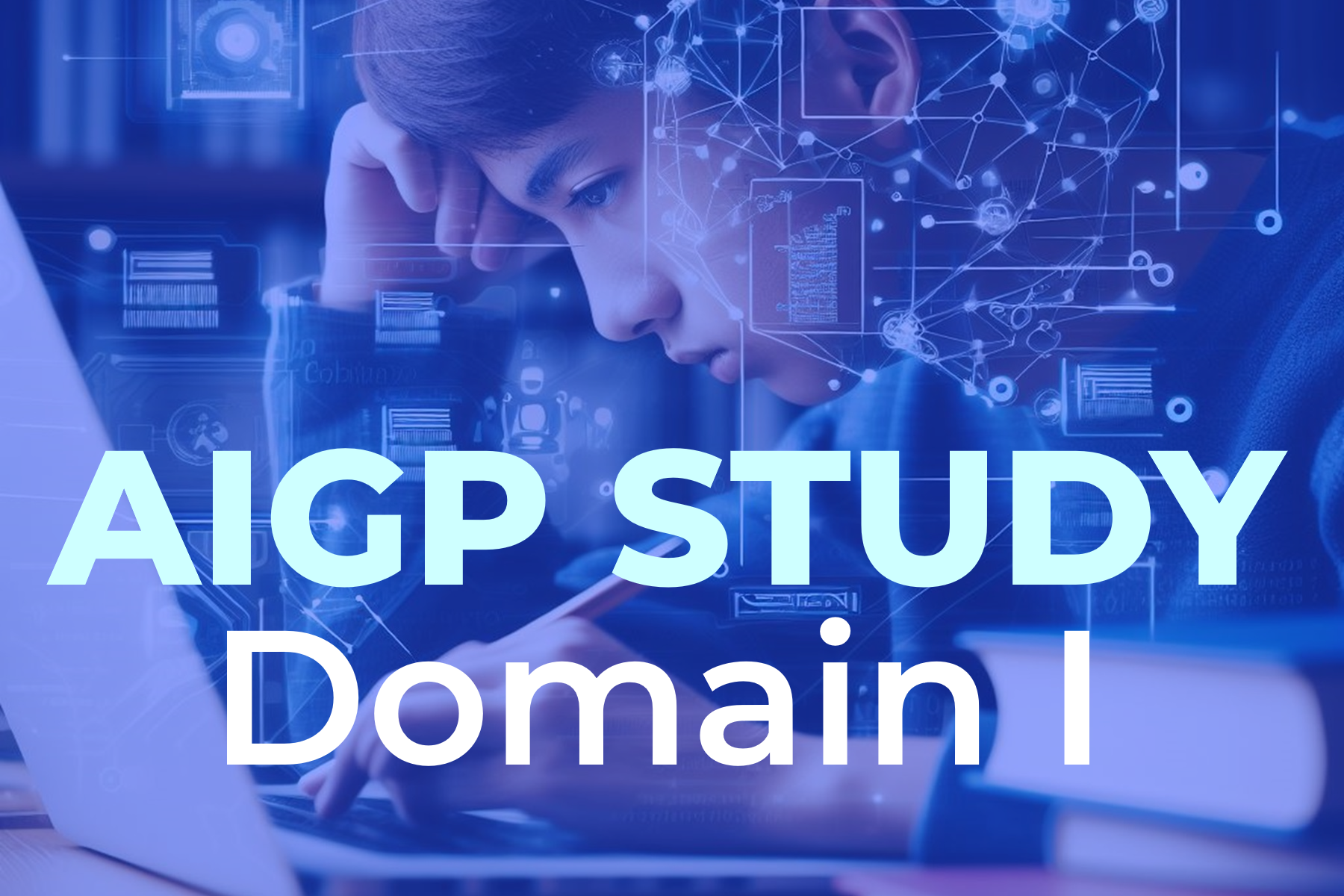Exploring the Foundations of AI Governance: Domain I
Welcome to our seven-week journey into the world of AI Governance! Over the coming weeks, we will be delving deep into each domain of the AIGP curriculum, providing you with a comprehensive understanding of their contents. Whether you're a seasoned AI professional or just starting out, our aim is to equip you with the knowledge and insights you need to navigate the complex landscape of AI governance. We encourage you to actively engage in the discussion by leaving comments and sharing valuable resources that can help fellow readers better comprehend the nuances of each domain. Together, we'll explore the key concepts, challenges, and solutions that shape the future of responsible AI. So, join us on this exciting educational journey, and let's dive into the world of AI governance together!
For professionals in data protection and privacy, the AIGP (AI Governance Professional) curriculum offers a crucial gateway into understanding the intricate world of artificial intelligence. AI and machine learning have, without a doubt, become ubiquitous forces, influencing every facet of our lives, from the everyday conveniences of facial recognition on our smartphones to the profound implications of self-driving cars on our roads. These transformative technologies are shaping our present and defining our future.
Module 1: Understanding the Basic Elements of AI and ML
The journey into AI governance begins with a fundamental understanding of the building blocks. In this module, we delve into the core concepts of AI and ML, offering concise yet comprehensive definitions of these terms. We explore the logical-mathematical principles that underlie their operation. Learners will emerge with a profound comprehension of the essential elements that define AI/ML, including the technology that underpins them, the level of automation they employ, the role of humans in shaping their objectives, and the output they generate – be it content, predictions, recommendations, or decisions.
However, we don't stop there. This module underscores the significance of AI as a socio-technical system, emphasizing the need for cross-disciplinary collaboration to ensure the responsible and ethical development and deployment of AI. We round off this module by introducing the OECD framework for classifying AI systems, a valuable tool for understanding the myriad types of AI and their unique characteristics.
Module 2: Understanding the Differences Among Types of AI Systems
This module takes us deeper into the intricate world of AI. We explore the various types of AI systems, dissecting their strengths, weaknesses, and potential applications. Topics covered include the distinctions between strong/broad and weak/narrow AI, the fundamentals of machine learning, including supervised, unsupervised, semi-supervised, and reinforcement learning, deep learning, generative AI, multi-modal models, transformer models, and the major providers.
We also delve into natural language processing (NLP), exploring the world of text as both input and output, and we differentiate between robotics and robotic process automation (RPA). Armed with this knowledge, learners will be better equipped to assess the suitability of different AI systems for specific applications and to identify potential risks and challenges.
Module 3: Understanding the AI Technology Stack
In this module, we embark on a journey through the AI technology stack. We cover key areas, including platforms and applications, model types, and compute infrastructure – both software and hardware, including servers and chips. This comprehensive overview provides a clear understanding of the components that constitute the AI technology stack and the roles they play in enabling the development and deployment of AI systems.
This knowledge will be invaluable for professionals in data protection and privacy, as it will empower them to make informed decisions regarding the selection, procurement, and use of AI technologies in their organizations.
Module 4: Understanding the History of AI and the Evolution of Data Science
Our exploration concludes by taking a historical perspective on AI's development, dating back to the 1956 Dartmouth summer research project. We examine the milestones, influential figures, and major trends that have driven the current wave of AI innovation. Furthermore, we explore the evolution of data science, highlighting its close ties to AI. Learners will gain insights into the roles data scientists play in AI development and the critical importance of data quality and governance for the success of AI projects.
In the coming weeks, we'll continue our journey through the AIGP curriculum, equipping you with a solid foundation in the fundamentals of AI governance. We invite you to actively engage with us, share your insights, and let us know your thoughts. Do you see any specific challenges or opportunities in the AI landscape related to data protection and privacy? Have you encountered examples that resonate with the content we've explored in this article? Join the discussion in our group, as together, we navigate the ever-evolving realm of AI governance.
Join the AIGP Study Group on Facebook to engage in discussions, share insights, and connect with fellow learners. Let's continue exploring AI Governance together!



